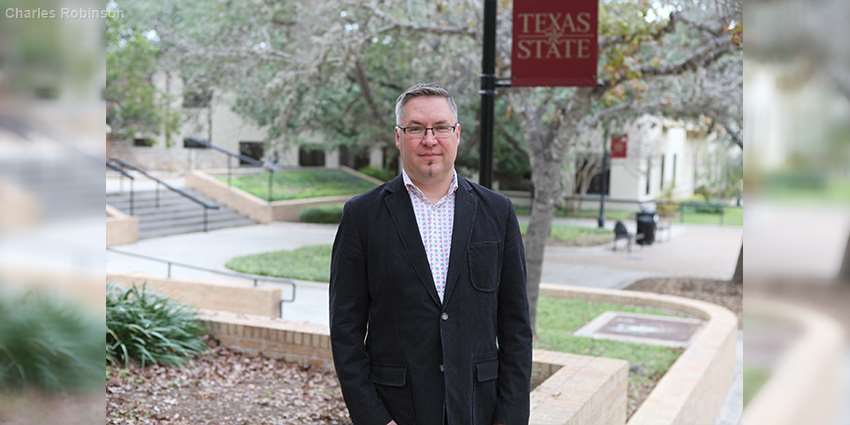Report: Future of groundwater pumping in Texas unsustainable

The future of water looks murky in the Lone Star State.
Groundwater levels are declining in Texas, according to two reports published last week by Texas State University and Environmental Defense Fund. Seven of 20 aquifer systems analyzed in the state are being overpumped, and that number could double by 2070, which would leave only six aquifers sustainable for future groundwater use in the state.
Unsustainable pumping of aquifers can lead to wells drying up, less groundwater story, and the degradation of rivers and springs that depend on aquifers for their ecosystems.
"We're heading in the wrong direction," said Vanessa Puig-Williams, director of Environmental Defense Fund's Texas Water Program. "In Texas, none of us want to see our aquifers be depleted or be unavailable as a water source in the future. And unfortunately, we've made a decision to allow our aquifers to be pumped beyond what is sustainable."
Groundwater conservation districts, which manage local aquifers, are not practicing sustainability to the degree that they should, Puig-Williams said, with many districts pumping more than they can withstand in the long term. And while some districts — such as the Clearwater Underground Conservation District, the Barton Springs District, and the Edwards Aquifer Conservation District—have good management practices employed to maintain spring flow, groundwater in Texas is greatly connected, meaning one aquifer’s supply can impact another.
For the Edwards Aquifer, groundwater is protected by the Endangered Species Act—limiting the amount of water pumped in order to protect creatures such as the blind salamander and the San Marcos Gambusia. Currently, the Edwards Aquifer is being pumped sustainably and will continue to be in 2070, according to the Texas State University report.
But the Edwards is connected with the Trinity Aquifer, which stretches north from San Antonio through the Texas Hill Country.

Dr. Robert Mace is a professor at Texas State University and executive director of the Meadows Center for Water and the Environment.
“Most of the Edwards Aquifer’s recharge comes from rivers across the recharge zone that leak into the aquifer, and then most of that water flowing through those rivers is a source for the Hill Country,” said Robert Mace, a professor at Texas State University and executive director of the Meadows Center for Water and the Environment. “But there’s water that also flows underground from the Trinity aquifer into the Edwards, so if there’s less water in the Trinity, there’s going to be less water flowing into the Edwards.”
While the Trinity Aquifer as a whole is projected to be managed sustainably in the future, the Trinity within the Hill Country is not, Mace said. The Trinity’s groundwater levels are projected to decline by 30 feet by 2070.
If that occurs, there will be less water for pumping in San Antonio, and the city would need to impose drought restrictions more frequently to ensure the Comal and the San Marcos rivers keep flowing.
The Trinity is like a leaky bathtub, Mace said. The tub’s faucet refills it while a certain amount drains for spring flow, and there are leaks on the side of the tub flowing to the Edwards, which empties it faster than a different aquifer. In order to pump the Trinity sustainably in the future, management plans must account for such leaks.
“Aquifers are a lot more complicated than just recharging and draining,” Mace said.
Meanwhile, other aquifers, such as the Ogallala beneath the Great Plains, are more concerning. According to the Texas State University report, the Ogallala is being pumped at a rate 6.5 times faster than it’s being recharged, and that area may begin to look elsewhere for water. So healthier aquifers may need to export water to thirstier areas of Texas. Already, there are parts of the Ogallala where people can no longer pump economically, as overpumping has depleted groundwater supplies there.
While water from the Edwards Aquifer cannot be sent beyond the Edwards Aquifer Authority’s boundaries due to the Endangered Species Act, water from the Trinity Aquifer can.
But there is good news, Puig-Williams said, in that the Texas Legislature has empowered groundwater conservation districts with the authority and the flexibility to manage groundwater sustainably. Chapter 36 of the Texas Water Code gives groundwater districts the planning and regulatory command to preserve and protect Texans’ resources and property rights.
“We’re talking about managing groundwater in a way that ensures aquifer levels are maintained in perpetuity, but without causing unacceptable environmental, economic or social consequences,” she said.
For example, areas with farming and agriculture need water for irrigation. So conservation district managers in such parts of Texas could limit new groundwater production in certain areas during drought, Puig-Williams said, or work with farmers to grow crops that require less water.
All the while, the springs would keep flowing for wildlife, keeping the habitat healthy.
“We have the framework to build upon groundwater conservation in Texas,” Puig-Williams said. “Districts can choose to manage groundwater sustainably, and they just need to take the steps to do so.”
Elena Bruess writes for the San Antonio Express-News through Report for America, a national service program that places journalists in local newsrooms. ReportforAmerica.org. elena.bruess@express-news.net

NEWS
Hide Full Index
Show Full Index
View All News